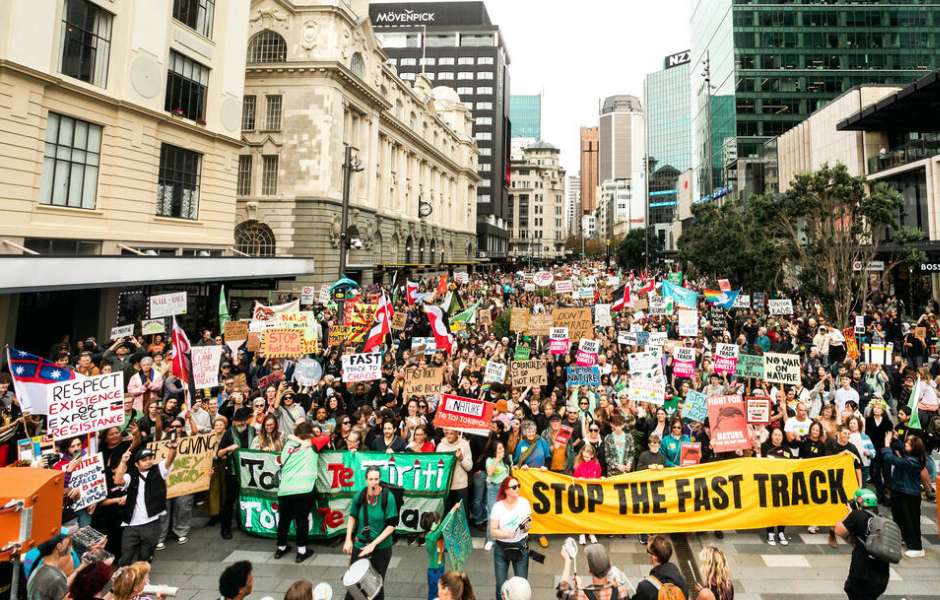- Fast fashion uses cheap materials and exploits low-paid labour in other countries
- Huge amounts of discarded, low-quality clothes harm both people and the environment
- Regulation of the fast fashion industry, and changing our consumption, can solve many of the issues
Global fast fashion brands are churning out more clothes than the planet can handle. Today’s trends are tomorrow’s trash, with our clothes made cheaply and disposed of quickly.
Table of contents
- What is fast fashion?
- How much clothing goes to landfill in New Zealand?
- What’s the lifespan of fast fashion items?
- Seven key problems with fast fashion
- How can a t-shirt be so cheap?
- The hidden supply chains behind fast fashion
- What is slow fashion?
- How do you spot fast fashion?
- Clothing manufacture in New Zealand
- Consumerism and fast fashion
- But I’m addicted to fast fashion! What can I do?
- Join the rebellion
It’s time to stand up for Papatūānuku, to demand sustainable ethical fashion that looks great and feels great at the same time.
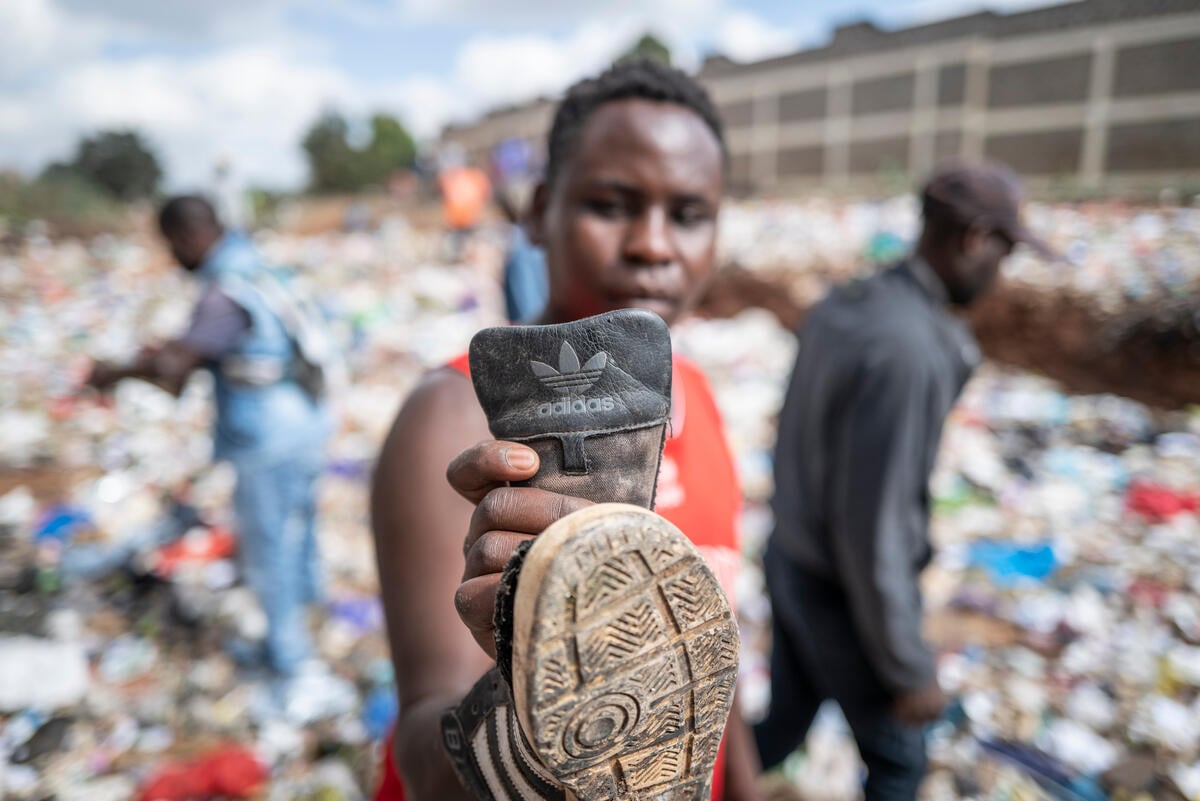
What is fast fashion?
‘Fast fashion’ is what we call the rapid and cheap design, manufacture and marketing of huge (like really HUGE) volumes of clothing. This way of producing garments often uses low-quality materials and exploits low-paid labour in other countries.
Fast fashion also refers to an approach to the design and marketing of clothing that emphasises making fashion trends quickly and cheaply. Fast fashion trends appeal to people shopping because they are cheap, stylish and trendy. It’s an irresistible offer – new shiny clothes at unbelievably low prices.
As you can guess, large volumes of low quality garments cause large problems for both people and the environment.
How much clothing goes to landfill in New Zealand?
The clothing industry’s huge production is a huge waste problem. Every year around 180,000 tonnes of clothing and textile waste is thrown away in New Zealand landfills.
That’s equivalent to 6429 shipping containers of waste!
The global statistics for fast fashion waste statistics are really shocking. Internationally a staggering 92 million tonnes of discarded garments find their way into landfills, out of the 100 billion produced every year.
What’s the lifespan of fast fashion items?
Studies have found that many people will dispose of clothes within a year, and one study found garments were disposed of after no more than 10 wearings!
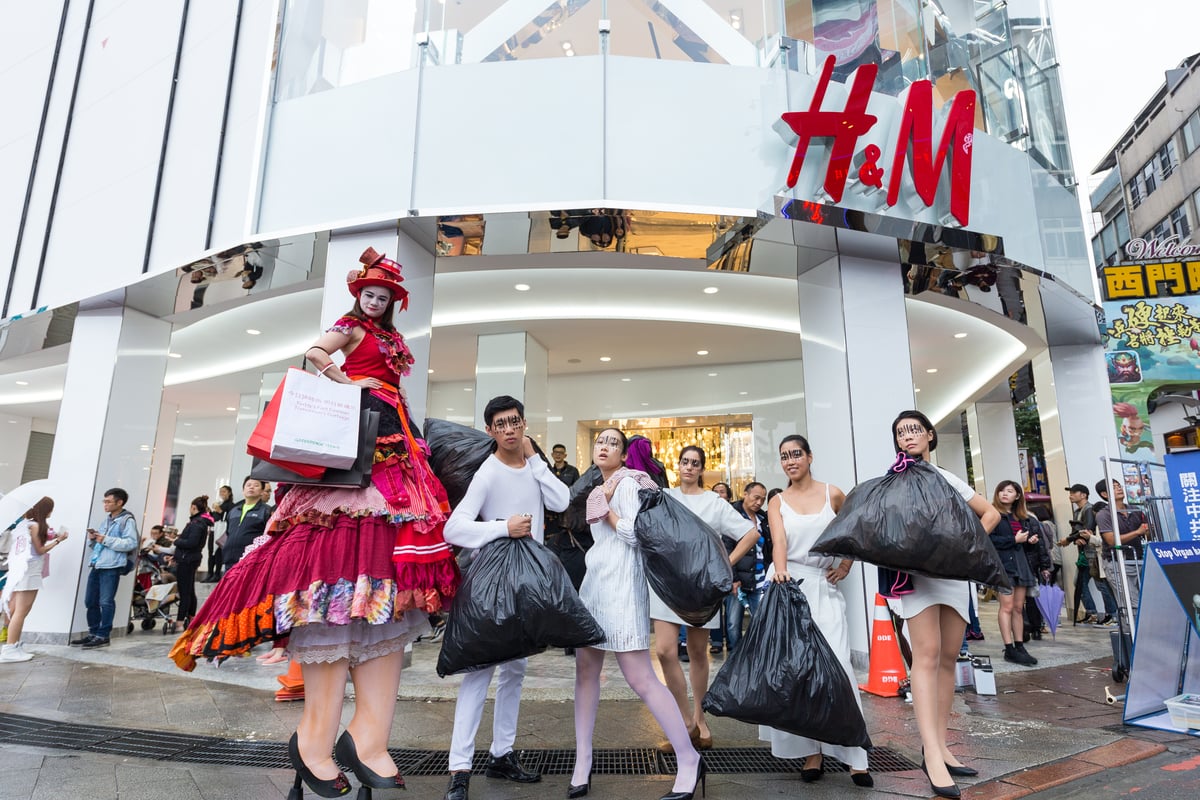
Seven key problems with fast fashion
We can see that waste is just one of seven main negative impacts of fast fashion.
- Waste; 85% of all textiles globally go to dumps each year. Landfill dumps are essentially a short term solution as there is only so much space you can put waste. Other supposed alternatives such as incineration, have their own pollution problems.
- Synthetic materials and fossil fuels; the huge majority of clothes that corporate companies sell to us are made out of synthetic materials – basically plastic sourced from oil, like polyester or nylon. Every aspect of the process to create these materials involves oil.
- Chemical pollution: textile dyeing is the world’s second-largest polluter of water, since the water leftover from the dyeing process is often dumped into ditches, streams or rivers.
- Microplastics in ecosystems; the manufacturing process of clothing products emits microplastics into wastewater, and when washed, tiny microplastics go down the drain and into our waters. In 2021, polyester fiber, a plastic material often used to make clothes, made up approximately 75% of the microplastics found in the Arctic Ocean.
- Wasting water; 2 billion pairs of jeans are produced every year, and a typical pair takes 7,000 litres of water to produce. For a t-shirt, it takes 2,700 litres of water to make just one – that’s the amount of water an average person drinks over the course of 900 days!
- Human rights abuses in the manufacture; garment workers frequently work 10 to 16 hour days, six days a week, for nearly three times less than their country’s living wage. 80% of apparel is made by young women between the ages of 18 and 24.
- Clothing colonisation shipping textile waste to countries such as Ghana; Ghana is suffering an environmental disaster caused by the fast fashion items we give or throw away.
All of these problems also mean fast fashion is a large contributor to the climate crisis, with estimates that the industry produces between 8–10% of global CO2 emissions.
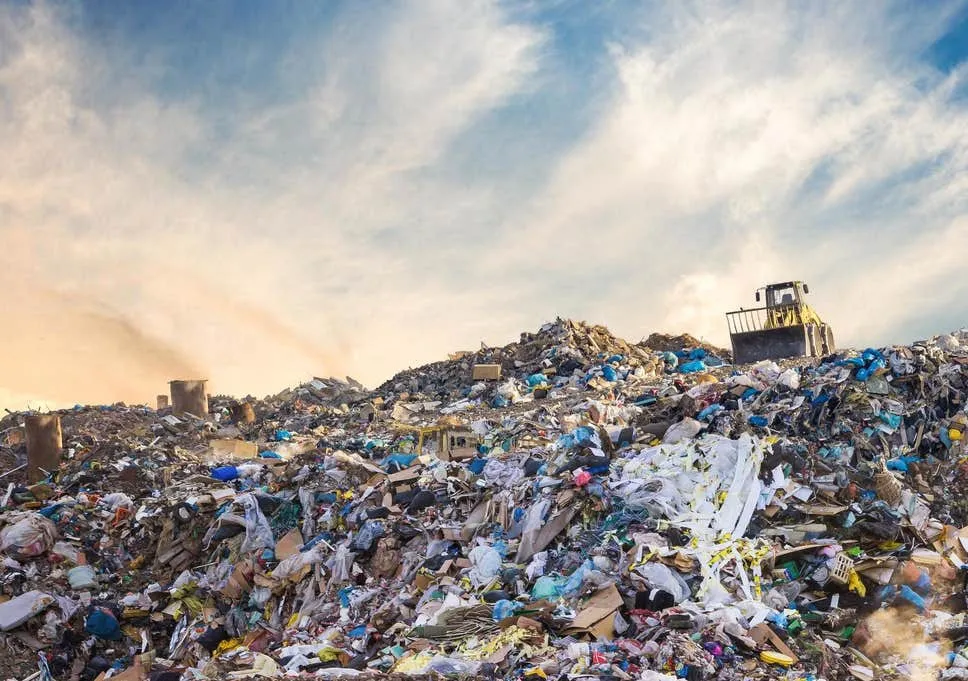
By regulating to slow down fast fashion we can use and appreciate what we have, and support our local clothes designers and makers. Sign the petition and join the campaign!
SIGN THE PETITIONFind out more at: How fast fashion fuels climate change, plastic pollution, and violence.
How can a t-shirt be so cheap?
Global fast fashion brands such as H&M, Nike, or Shein, are churning out more clothes than the planet can handle. It’s also the way they make money.
First, they lower labour expenses and use cheaper synthetic materials.
Then by producing huge volumes, they can create ‘efficiencies of production’ to make it quicker to produce a garment.
And by producing huge volumes of garments they may not make much profit on a single garment, but earn huge profits when scaled up and selling millions of garments.
Brands rely on a business model of increasing consumer demand and growth in production. By encouraging always-new clothes and discarding old clothes, brands increase demand for more of their products.
The hidden supply chains behind fast fashion
In an ideal world we would trust companies to be accountable for the products they sell. Yet many large brands simply don’t know how the clothes they sell are produced because they outsource the production of their garments. And they choose not to know.
Tearfund’s 2021 Ethical Fashion Report found (in 2019) 40% of clothes imported into New Zealand could be made using forced and child labour.
Garment makers are skilled workers who frequently work 10 to 16-hour days, six days a week, for nearly three times less than their country’s living wage.
In Asia and the Pacific there are 65 million garment workers, and most of them are women.
Retailers (such as Kmart, Glassons, Just Jeans or JayJays) should be responsible for having transparency in their supply chains, so they know how their garments were made, to ensure they are sustainably and ethically made.
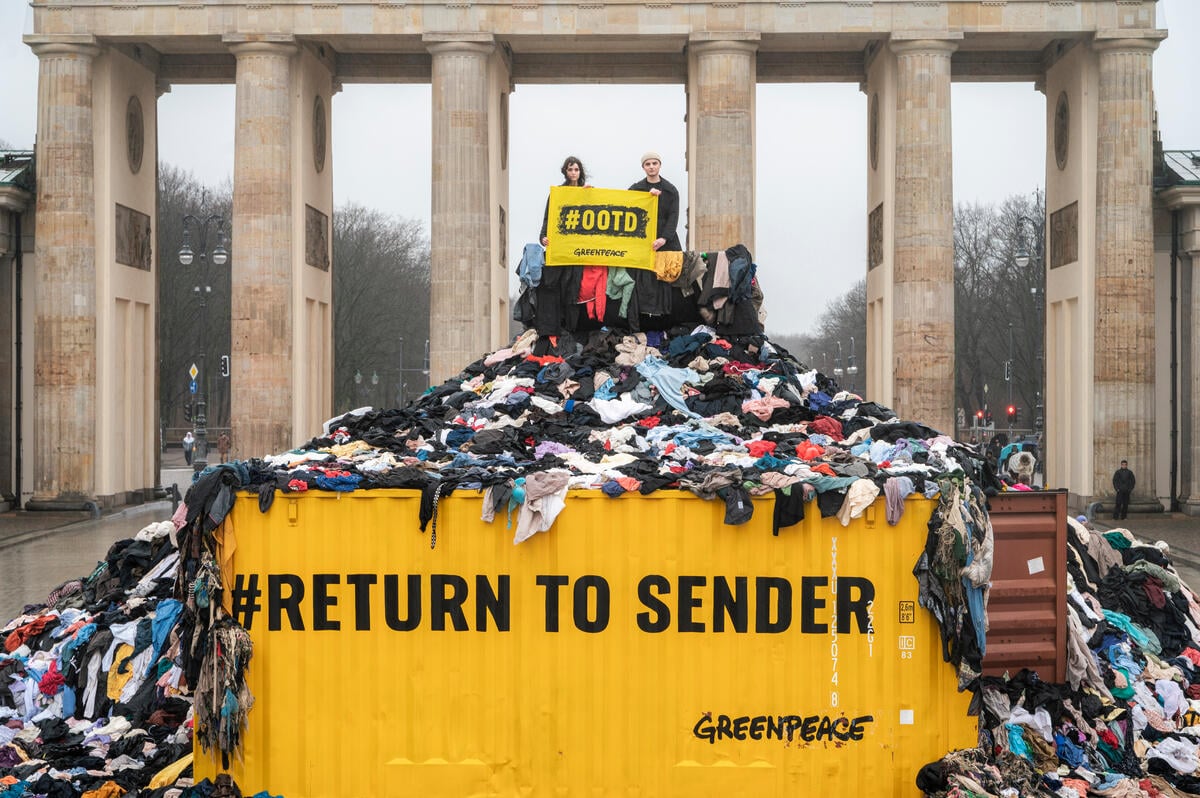
What is slow fashion?
Ok let’s turn all these problems around! It would be a huge relief for our planet if we invested more in clothes that last longer and we appreciate more. We could have feel-good, sustainable, ethical fashion – some people call this slow fashion.
Clothes manufacturers could be using longer-lasting sustainable materials to prioritise the wellbeing of people and the planet. They can design clothes to maximise their useful life.
Retailers can take responsibility to know where the clothes they sell come from and how they were made.
When buying clothes we can appreciate the clothes makers and workers by financially supporting local clothes designers and manufacturers. Local manufacturers are more accountable to us for their products. We can wear more second-hand clothes, and learn how to repair or upcycle the clothes we love. We can look great and feel great at the same time.
How do you spot fast fashion?
For a start, look at the material. If it’s made from cheap materials like polyester, polyurethane, rayon, spandex, and nylon, it is not made to last.
Well-known brands in New Zealand that rely on this model of rapid and cheap design, manufacture and marketing of huge volumes of clothing include Target, Glassons, H&M, Nike, Shein.
Is your favourite brand fast fashion? Check out the Tearfund 2022 Ethical Fashion Report to look at your favourite clothing brands and how they rate for environmental sustainability.
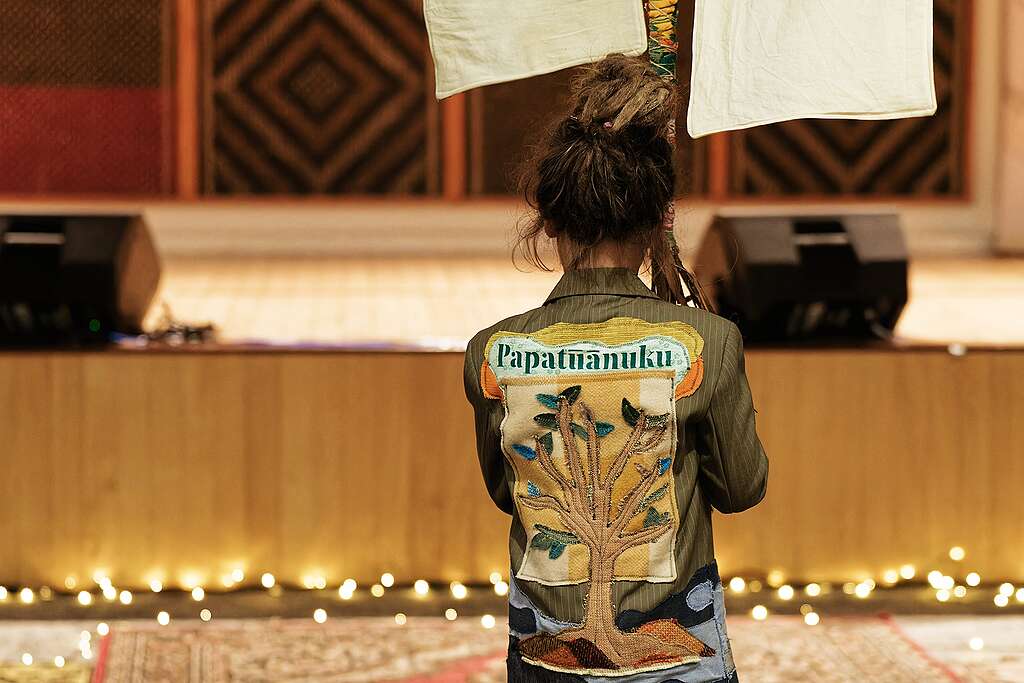
Clothing manufacture in New Zealand
It’s increasingly difficult to buy well-made clothes, no matter how much you are willing to spend. Fast fashion has normalised cheaper methods and fabrics. Low prices make it hard for local small-scale clothing manufacturers to survive and thrive because they are always being undercut.
Not long ago, in our grandparents’ time, people valued their clothes a lot more, took good care of them and appreciated the craft of sewing as a valuable skill. There were lots of small fashion businesses across the country, even in small towns.
Fewer and fewer people in New Zealand are learning the skills in clothes manufacture. These skills include design, cutting and pressing, machining and finishing. In 2023 less than 2000 people worked in the New Zealand clothing industry.
The industry employed about 80,000 people in the 1950s! Many clothing factories were set up in lower North Island towns producing high-end clothes for the cities.
Governments have the power to regulate the fast fashion industry to support local fashion, and protect the environment.

By regulating to slow down fast fashion we can use and appreciate what we have, and support our local clothes designers and makers. Sign the petition and join the campaign!
SIGN THE PETITIONConsumerism and fast fashion
The idea of wearing clothes beyond a single season, let alone a decade, or a lifetime may now seem old fashioned.
Brands sell ideas as much as they sell actual clothes. Clothing is packaged with the image of up-to-date modern, clean, stylish lifestyles.
We do care what others think. People are social creatures and if we want to fit in with everyone around us, it may feel weird to have older clothes.
Yet today’s trends are tomorrow’s trash, with mass-produced clothes made cheaply and disposed of quickly. And the fast fashion clothing industry wants to reinforce this culture of throwaway consumerism.
Consumerism is a never-ending hunger to buy and own more stuff, and to define one’s identity through what we own.
Corporates depend on continual growth to make money. Brands make money from shaping our behaviours and they invest huge amounts of money into selling their products to us.
Global corporations study behaviours and audience research, and then invest in communications and promotions that sell the most items. Their messaging is everywhere and they talk to us as consumers; not as people who care about the health of the planet.
What’s the antidote to consumerism? We need to develop a more considerate kind of ‘materialism’ – a materialism that appreciates things and where they have come from.
But I’m addicted to fast fashion! What can I do?
We need clothes and of course we all want a bargain. But the price is cheap because the producers are not paying the true cost – the harms to Papatūānuku.
We can have a future where fashion pieces are made from toxic-free, sustainable materials, where clothing is designed for longevity and reusability, where every purchase comes with the assurance of fair labour practices, where slow fashion is the norm amidst a fast-paced world. Where fast fashion and its destructive impacts are out of fashion.
Here are four tips on how to avoid fast fashion:
- Recognise the ads that are targeting you; Convenient cheap disposable clothes are promoted in our social media algorithms.
- Spend a bit more and invest in clothes you will wear over longer time periods, so you spend less over time.
- Work out what you really like to wear, not just what is new this year. Maybe this will define your own style! What we wear is an expression of who we are and what we want to say. Our clothes change the way we feel and walk in the world, and the messages we want to share.
- We can learn from how we used to do things. Support manufacturers using natural fabrics that don’t harm Papatūānuku. We can encourage repair and upcycling as a common habit and clothes are kept and appreciated for life.
If we like good fashion then let’s support local fashion creators and craftspeople!
Check out more from:
- I quit fast fashion, here’s how you can too, Consumer NZ
- I Didn’t Buy Clothes For A Year & This Happened, Ethically Kate
- Detox my fashion, Greenpeace International
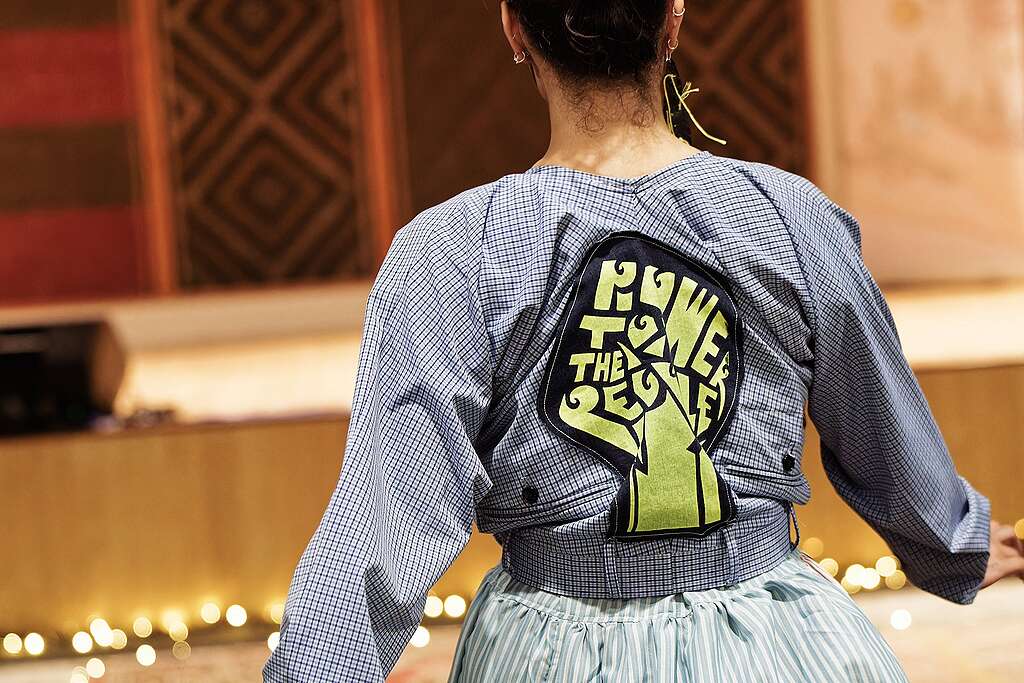
Join the rebellion!
Fashion Rebellion is an activist group of creative rebels in Aotearoa who are standing up for Papatūānuku and garment makers, and for everyone who wants faster action on reducing fashion pollution.
We can all make a difference as individuals, but together we are more powerful.
Fashion Rebellion is calling on the Government to slow down fast fashion. The New Zealand Government has the power to end our part in the harms of fast fashion by setting strong regulations for producer responsibility.
Sign Fashion Rebellion’s petition to put in place rules for producer responsibility to slow down the production of fast fashion in New Zealand. Producers should cover the costs of the pollution caused by their products over their lifecycle.

By regulating to slow down fast fashion we can use and appreciate what we have, and support our local clothes designers and makers. Sign the petition and join the campaign!
Take action
